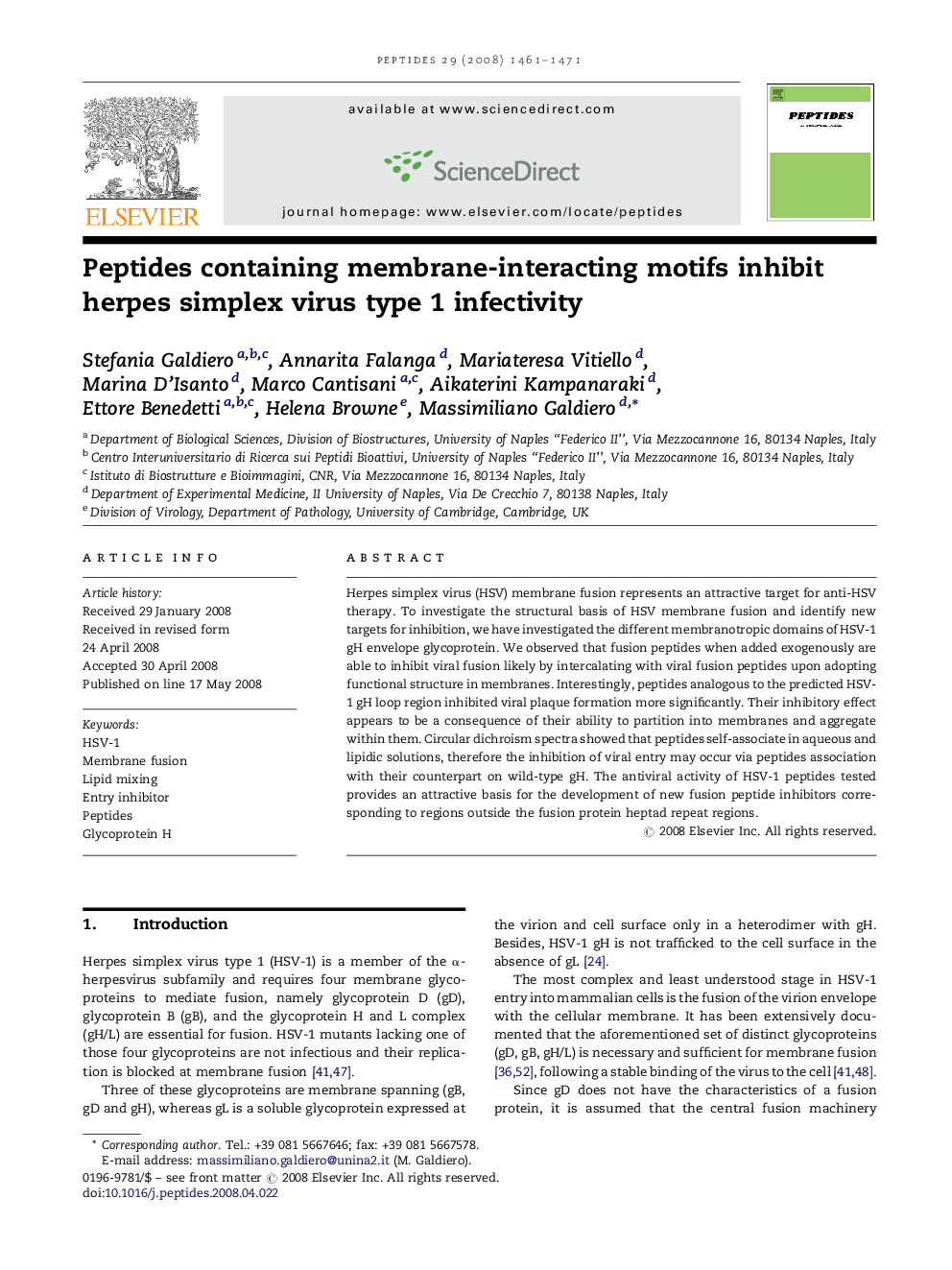| Article ID | Journal | Published Year | Pages | File Type |
|---|---|---|---|---|
| 2008260 | Peptides | 2008 | 11 Pages |
Herpes simplex virus (HSV) membrane fusion represents an attractive target for anti-HSV therapy. To investigate the structural basis of HSV membrane fusion and identify new targets for inhibition, we have investigated the different membranotropic domains of HSV-1 gH envelope glycoprotein. We observed that fusion peptides when added exogenously are able to inhibit viral fusion likely by intercalating with viral fusion peptides upon adopting functional structure in membranes. Interestingly, peptides analogous to the predicted HSV-1 gH loop region inhibited viral plaque formation more significantly. Their inhibitory effect appears to be a consequence of their ability to partition into membranes and aggregate within them. Circular dichroism spectra showed that peptides self-associate in aqueous and lipidic solutions, therefore the inhibition of viral entry may occur via peptides association with their counterpart on wild-type gH. The antiviral activity of HSV-1 peptides tested provides an attractive basis for the development of new fusion peptide inhibitors corresponding to regions outside the fusion protein heptad repeat regions.
